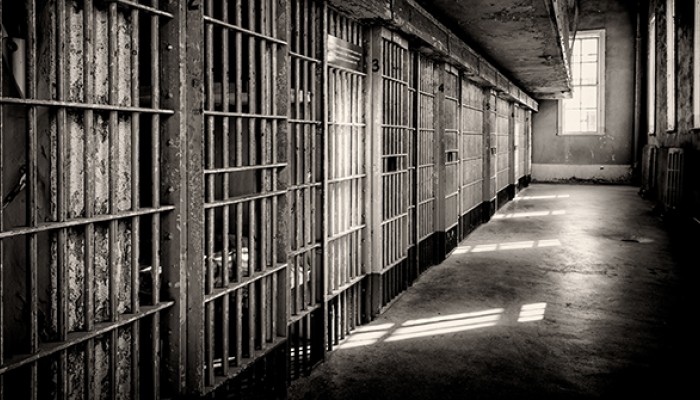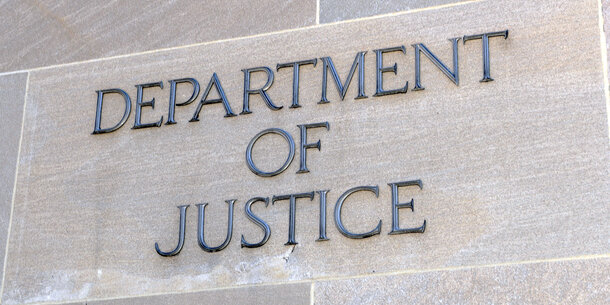You can draw a straight line in American justice between the U.S. Supreme Court decision last week that endorsed a Missouri execution likely to torture the condemned and the sickening mistreatment of prisoners in Alabama (and countless other jurisdictions across the country). In both instances, judges and other officials have tolerated, and at times encouraged, the erosion of constitutional rights of people who have been systematically dehumanized in the eyes of our hollow laws. In both cases, the public servants acting in our name have embraced or defended policies designed to be cruel toward those they target. It is arbitrary. It is capricious. And it passes for justice in the Age of Trump.
Practices designed to be cruel in the sense that five conservative justices on the Supreme Court now say it is okay if a death row inmate with a grave illness feels excruciating pain when his executioners pump lethal drugs into his body. Cruel in the sense that Alabama prison officials have known for decades that their penitentiaries are places of horrific sexual violence and mayhem and still have refused to fix the problem. Cruel in the sense that the Eighth Amendment’s prohibition against “cruel and unusual punishment,” designed to limit the government when it turns its might against a person, has been turned upside down to permit punishment that is both intentionally barbaric and chillingly routine.
There already has been plenty of smart analysis about the Supreme Court’s lamentable decision in the case of Russell Bucklew in Missouri. Bucklew is a murderer on death row, and the state wants to execute him even though he has a rare medical condition that will likely result in him choking to death on his own blood when he gets his lethal injection. Too bad, ruled Justice Neil Gorsuch, citing hoary 18th-century practices as his guide. “The Eighth Amendment,” he wrote in Bucklew v. Precythe, “does not guarantee a prisoner a painless death — something that, of course, isn’t guaranteed to many people, including most victims of capital crimes.”
Gorsuch’s rationale in Bucklew not coincidentally is of the same pound-of-flesh mentality that animates almost every appellate brief written by state prosecutors in almost every capital case. It also, not coincidentally, echoes the way Justice Clarence Thomas for decades has spiced up his own death penalty opinions. There is always a gruesome recitation of the facts of the crime even if those facts are irrelevant to the legal issues raised on appeal. State attorneys defending a conviction, or an execution like the one planned for Bucklew, always want reviewing judges to have the details of the crime on their minds when they are evaluating the merits of the defendant’s claims.
Don’t forget, each of these briefs implicitly argues that you are here mainly to do justice to the victim of this crime and not to this convicted murderer whose lawyers are asking for help. The idea is to dehumanize a defendant, to tag him forever with the worst thing he’s ever done, and then argue that he therefore merits little succor under the Eighth Amendment. And the purpose behind that is to speed up the “machinery of death,” to paraphrase former Justice Harry Blackmun’s unforgettable phrase. What Justice Gorsuch and the rest of the Court’s conservatives are saying in Bucklew is that murderers may, by law, be treated by the government in the moment of their death the way those murderers treated their own victims.
This wanton formulation by the Supreme Court makes the executioner, and thus the rest of us by proxy, little better than the person the state is killing in our name. An execution under the Bucklew precedent is both intentional and deliberately mindful of the pain it will inflict on the human being to be killed. In more enlightened times, the Supreme Court declared 43 years ago in Estelle v. Gamble“that deliberate indifference to serious medical needs of prisoners constitutes the ‘unnecessary and wanton infliction of pain’” proscribed by the Eighth Amendment. Gorsuch and the gang in Bucklew go beyond “deliberate indifference” to “deliberate cruelty.”
But judicial indifference to the “deliberate indifference” standard under the Eighth Amendment is a good way to segue to the other travesty upon justice that unfolded last week. Turns out the same callous disregard for the fate of “dehumanized” prisoners we just saw in Bucklew is experienced daily by countless men and women in our prisons and jails. We somehow have arrived at a rare moment in American history where there is broad bipartisan support for significant reforms in criminal justice, even over capital punishment itself, and yet we continue to allow our prisons and jails to be places where unspeakable cruelty and violence is permitted year after year.
The Justice Department — Donald Trump’s Justice Department, mind you — last week announced that its experts and investigators believe that Alabama prison officials routinely violate the constitutional rights of prisoners by permitting rampant sexual abuse and other violence between prisoners. This is separate from the federal lawsuit now underway there over the misuse of solitary confinement. The feds say the problem isn’t just in one prison or in one unit of one prison. Instead, the problem is systemic and pervasive and is getting worse. The response by Alabama Governor Kay Ivey, who fancies herself a justice reformer? Call it a crisis and renew her request for funding for three new prisons in the state.
The savagery chronicled by federal investigators behind bars is not unique to Alabama and it is nothing new. It applies equally to prisons and jails. It cuts across political ideological divides. Florida’s prisons also are a mess but so are jails in Oregon and Washington. The problems at Rikers Island in New York sadly predated the death of Kalief Browder and will linger until the jail is closed. Likewise, it has taken decades for litigation designed to reform atrocious conditions of confinement in prisons in Arizona and there still is no end in sight. I wrote a column for The Atlantic titled “One of the Darkest Periods in the History of American Prisons." That was in June 2013.
There is nothing complicated about why this “deliberate indifference” has existed all these years despite the Supreme Court precedent that was supposed to nullify it. The attitude exists for essentially the same simple reasons Justice Gorsuch alluded to in Bucklew. In the end, no matter what the Eighth Amendment says or doesn’t say, no matter which party is in power, too few people with the legal and political power to honor the rights of inmates give a damn about whether prisoners who committed violent crimes themselves become victims of violence or victims of suicide. For too many in corrections, it’s a matter of one less mouth to feed and one more empty bed to fill to ease chronic overpopulation.
Here’s an example of what happens when deliberate “indifference” turns into outright “hostility” toward inmates. About seven years ago, I wrote a piece about the grim life and early death of Jose Martin Vega, a career criminal who hanged himself in his prison cell in Colorado in 2010. My story was about the deplorable conditions of confinement at the ADX prison, but the most chilling part of the evidence was the fact that prison officials had ensured that Vega’s lifeless body would remain chained even after it was delivered from the prison to a local coroner. Common practice, I learned, to send a message to the world that a prison couldn’t get out of his sentence even if he died serving it.
If state and local officials really wanted to, they could, indeed, spend the money necessary to build newer, safer prisons and jails and then ensure that those facilities were adequately staffed. They could ensure that corrections officials are kept properly paid and trained and that health care providers who operate in prisons and jails, private or otherwise, are held accountable for the treatment they provide to inmates. They could do all this and that would mean that prisoners in their states, or in their counties, would be treated fairly, and humanely, and within constitutional parameters. The fact that this is not happening is not a mistake. It is an expression of cruel policy. And it now speaks loudest on the highest court in our land.
Remember nearly a decade ago, during the Supreme Court confirmation battle over Sonia Sotomayor, when the debate centered over the meaning of judicial “empathy"? We now have arrived at essentially the opposite point in the arc of justice: Where judges and justices are embracing forms of mercilessness as badges of constitutional honor. The Supreme Court’s conservatives easily could have spared Russell Bucklew and sent a message that we can’t torture people when we execute them. Alabama lawmakers easily could have made the state’s prisons safer decades ago. We are what our prisons say we are. The saddest thing is that we don’t have to be.
The views expressed are the author’s own and not necessarily those of the Brennan Center for Justice.
(Images: Sam Scholes/Getty)


